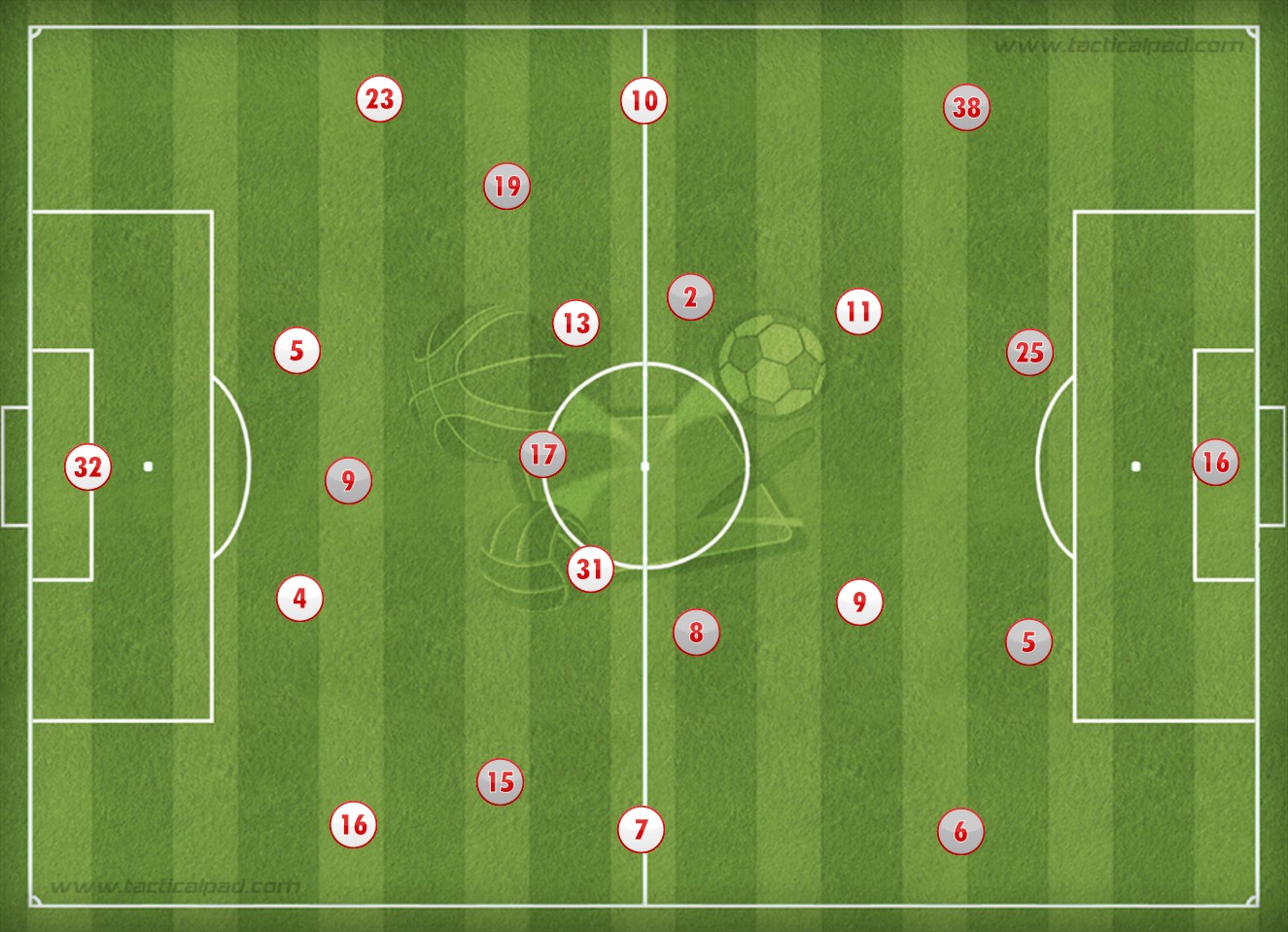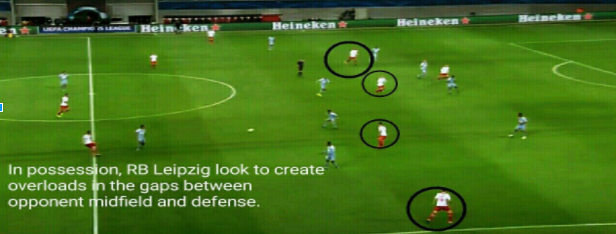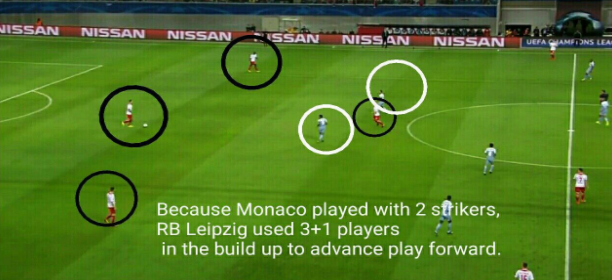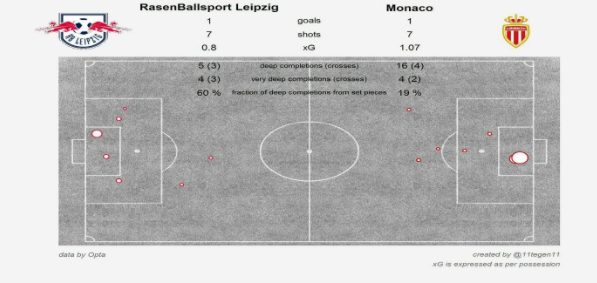Kaushik Goswami tactically analyses the 1-1 draw between RB Leipzig and AS Monaco in the Champions League
With most of the European heavyweights playing on Wednesday, this game was not on most people’s watch list. However, Leipzig and Monaco produced 90 mins of fast paced quality football which made it one of the most entertaining games of the day. Last season’s semifinalists Monaco had to battle hard to come from behind in the game which produced end-to-end stuff.

RB Leipzig: Ğulacsi; Klosterman, Orban, Upamecano, Halstenberg; Sabitzer, Demme, Ilsanker, Forsberg; Werner, Poulsen.
Monaco: Benaglio; Toure, Glik, Jemerson, Jorge; Sidibe, Fabinho, Moutinho, Diakhaby; Tielemans, Falcao.
Game of transitions
None of the two sides are reliant on a possession-based slow build up game. Their comfort zones lie mostly in the offensive transition phases. Thus, it was clear from the outset that both teams look to play vertically as soon as they won the ball following a turnover. Monaco had problems in the weekend when they lost 4-0 to OGC Nice. Nice capitalised on the fact that Monaco had too many players ahead of the ball in possession phases. Throughout the game, RB Leipzig created such situations to exploit the lack of vertical compactness in Monaco’s defensive structure.
Monaco lack a good structure to handle second balls and RB Leipzig exploited this with their superior structure in such situations. It led to the first goal for Leipzig. The German side had an interesting structure in situations where there was a possibility of winning second balls such as throw ins. Normally teams use 8 players (or 7) near the ball in close proximity to each other when they have to handle a throw in. Such teams usually have one player in the ball far halfspace and another player in the ball far wing. However, RB Leipzig used all 10 players in the ball near zone in such moments. These adjustments compliment their vertical gameplay. It enables them to combine better in tight spaces and move past the opponent back line.

Monaco on the other hand, tried to get their wingers into play to create chances for Falcao. However, the crosses were disappointing for most of the game. Monaco missed Benjamin Mendy who was crucial in the wing play last season. However, they did manage to score after a good cross was met by Diakhaby who headed it into the path of Tielemans to level the scores.
Leipzig build up
Even though Leipzig are mainly a team who rely on quick counterattacks, they had a lot of possession in the game (60%). They had a clear plan even during possession phases. There were gaps between Monaco’s two banks of 4 when they were out of possession trying to block access for Monaco’s centre-backs. This enabled Leipzig to get their creative midfielders into those gaps so as to provide passing options to their centre-backs. By getting into those gaps, it opened probabilities for combinations behind the Monaco back line. It also meant that they could counter press in higher areas to launch attacks closer to the box.

In the first line, Leipzig used a 3+1 structure to create numerical superiority versus the two Monaco forwards who were looking to press the back line. Because of the superiority they could move out of the pressure into the next phase and advance play.
By inviting the press from the Monaco forwards and midfielders, they also ensured that they opened up ample space for the attacking players like Werner ahead of the Monaco backline.

There are always risks when using so many players up front. The pressing dynamics immediately after losing the ball must be optimal to prevent counterattacks. Leipzig’s most vulnerable moments came when they failed to press effectively after losing the ball in the final third. As a result of this, Monaco found themselves with some good chances but poor decision making by players like Diakhaby let them down.
2nd half
Leipzig continued their tempo throughout the second half too. Their vertical gameplay led to them going past the Monaco backline on a couple of occasions. At times, the forwards marginally strayed offside. They still had enough chances to win the game. Even though xG was lower compared to Monaco, a closer look at the shots indicate that Monaco’s xG score was elevated because of the two shots which Tielemans took that eventually led to the goal. Other than that, Monaco did not have too many shots inside the box. However, Leipzig had many shots inside the box which shows how many times they got past the Monaco backline.

Monaco too had their chances on the break but failed to convert them. In the end, the 1-1 was a fair result given how inefficient both teams were in their final third decision making.
Conclusion
Both sides look set to progress from the group. Their final third play has to improve though if they have to collect points from the other teams. For the neutral fans, this game was a great watch and the two teams can be pleased with their performance.
- Tactical Analysis: RB Leipzig 1-1 AS Monaco | Dynamism and the 4-4-2 - September 16, 2017
- Tactical Analysis: Arsenal 4-3 Leicester City | Attacking Patterns & Transitions - August 19, 2017
- Analysis: Why Nemanja Matic could be Manchester United’s most important signing - August 6, 2017























































